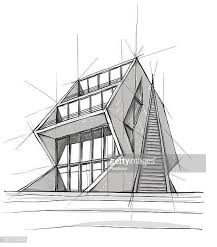Introduction
In the world of architecture and construction, conveying design ideas clearly and creatively is critical. One powerful way professionals achieve this is through architectural illustration design. Whether it’s to present a new building to a client, promote a development project, or visualize historical restorations, architectural illustrations provide a visually compelling bridge between imagination and reality. This beginner’s guide explores what architectural illustration design is, why it matters, its styles, tools, and how to get started.
What Is Architectural Illustration Design?
Architectural illustration design is the art and practice of visually representing architectural concepts through drawings, paintings, or digital artwork. It’s not just about showing a building’s structure—it’s about capturing its soul, ambiance, and the context in which it exists. Unlike technical blueprints or CAD diagrams, architectural illustrations are often more expressive, designed to tell a story, attract investors, or stir public interest.
These illustrations can be created using traditional hand-drawing techniques, digital tools, or a mix of both. They might represent projects that are still in the conceptual stage, undergoing construction, or already completed and being documented for promotional or educational purposes.
Why Is Architectural Illustration Design Important?
- Visual Communication
Architecture is a complex blend of art and engineering. Illustrations simplify this complexity, turning plans and elevations into visuals that anyone—clients, investors, or the general public—can understand. - Client Engagement
An emotionally resonant illustration can evoke excitement and interest, making it easier for clients to visualize the final product. This often helps in securing project approvals or funding. - Marketing and Branding
Developers and architectural firms use architectural illustrations in brochures, websites, presentations, and real estate campaigns. They serve as branding tools that represent the vision behind a space. - Design Exploration
For architects and designers themselves, illustration allows for creative exploration of ideas before committing to final plans.
Types of Architectural Illustration Design
Understanding the various types can help beginners choose the right style for their purpose.
- Conceptual Illustrations
- Used in the early stages of design
- Focus on mood, shape, and space
- Often abstract or loosely detailed
- Exterior Renderings
- Show the outside of a building
- Useful for marketing residential, commercial, and public structures
- Can depict time of day, weather, and landscape surroundings
- Interior Renderings
- Focus on room layouts, furniture, and finishes
- Often used by interior designers and architects
- Aerial Views and Site Plans
- Offer a bird’s eye perspective
- Good for large developments or urban planning
- Cutaways and Exploded Views
- Illustrate the interior layout or systems within a building
- Ideal for educational or technical content
- Historical and Reconstruction Illustrations
- Depict ancient or damaged buildings as they once were
- Often used in museums and archaeological publications
Traditional vs. Digital Architectural Illustration
Traditional Illustration:
- Includes watercolor, pen and ink, pencil sketches
- Offers a human, expressive touch
- Preferred by some for conceptual and emotional storytelling
Digital Illustration:
- Created using tools like Adobe Photoshop, Illustrator, SketchUp, and Procreate
- Can be hyper-realistic or stylized
- Easily revised and shared
- Often used in commercial and corporate settings
Many illustrators today blend both methods for a hybrid approach—starting with a pencil sketch and finishing with digital enhancements.
Tools and Software Used
If you’re just starting with architectural illustration design, here are some popular tools:
- Adobe Photoshop & Illustrator – For detailed digital artwork and post-processing
- SketchUp – Great for basic 3D modeling and perspective setup
- Procreate – A favorite for iPad users, offering expressive drawing tools
- Autodesk Revit or AutoCAD – Often used for generating base drawings
- Rhino or Blender – For advanced 3D modeling and rendering
- Watercolors, markers, pens – Still relevant and beloved in traditional techniques
How to Get Started with Architectural Illustration Design
- Learn the Basics of Architecture
Understand structure, scale, materials, and architectural language. This knowledge makes your illustrations more accurate and credible. - Study Drawing and Perspective
Learn how to draw in one-, two-, and three-point perspective. This is crucial for believable spatial representation. - Practice with Real Projects
Try illustrating buildings in your neighborhood, or reimagine famous landmarks with a new twist. - Experiment with Different Styles
Find your artistic voice. Some artists prefer sketchy, hand-drawn looks, while others lean toward polished, digital aesthetics. - Build a Portfolio
Start collecting your work in a well-organized portfolio. Include different types of illustrations to show range. - Seek Feedback
Join architectural illustration forums or social media groups. Feedback helps improve both your technique and conceptual skills. - Consider Courses or Mentorship
Online platforms like Domestika, Skillshare, or Coursera offer great architectural illustration tutorials for all skill levels.
Careers and Applications
Architectural illustrators can work freelance, for architectural firms, or in industries like:
- Real estate development
- Publishing and editorial
- Museum and exhibition design
- Urban planning
- Marketing and advertising
The demand for high-quality architectural visuals is growing, especially with the rise of real estate visualization and immersive experiences like VR.
Tips for Effective Architectural Illustrations
- Know your audience: Tailor your illustration style to what the client or viewer expects.
- Focus on storytelling: Think about the mood and atmosphere you want to convey.
- Keep compositions clean: Avoid clutter. Let the architecture shine.
- Use lighting wisely: Shadows and light can add depth and drama.
- Be open to revisions: Flexibility is key in collaborative projects.
Conclusion
Architectural illustration design is a fascinating blend of creativity, technique, and storytelling. Whether you’re an aspiring architect, artist, or illustrator, this field offers rich opportunities to visualize spaces in powerful and emotional ways. With practice, the right tools, and a strong understanding of architectural concepts, you can turn your passion into a rewarding skill or career.
If you’ve ever imagined what a building would feel like before it exists, architectural illustration is your chance to bring that vision to life—one drawing at a time.

